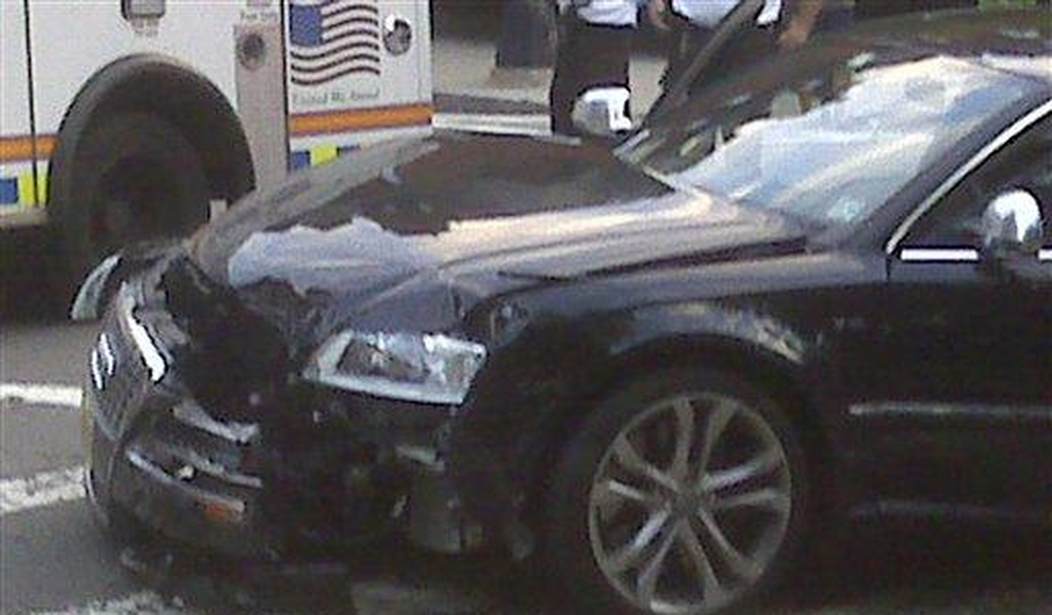This is one of those trends that had never popped up on my radar, but I found it rather shocking after looking into the details. A recent government highway safety report indicates that traffic fatalities have risen slightly since the pandemic, but are otherwise on par with what’s been seen in the past couple of decades. A slight increase was to be expected because so few people were driving during the lockdowns, but at least the situation isn’t markedly more dangerous. The surprising figure was the fact that fatalities among pedestrians who are struck by vehicles have increased disproportionately during the same period, with 77% more being reported now than in 2010. At New York Magazine, Benjamin Hart interviews Yonah Freemark of the Metropolitan Housing and Communities Policy Center at the Urban Institute to find out why this is happening.
The number of people killed while driving in America has ticked up since the beginning of the pandemic, but is still in line with totals from ten years ago — and significantly down from the 1990s and earlier. But walking around on America’s streets has gotten much more dangerous over the last decade, with deaths almost doubling in that time.
The bloody trend only worsened in 2022, per a new Governors Highway Safety Association report that found pedestrian deaths at a 40-plus-year high. Meanwhile, many other high-income countries significantly curbed pedestrian deaths over the same period. Why is America accelerating in the wrong direction as its peers tap the brakes?
Freemark explains that there are multiple factors contributing to this trend. They involve both poor or even dangerous government policies and people’s personal travel preferences. Another major clue can be found in the specific locations where the most pedestrian deaths are being recorded.
In terms of location, there are actually fewer per capita pedestrian deaths in larger cities as well as out in rural areas. The disproportionate numbers are coming from rapidly expanding suburban areas. And that’s where the bad government policy angle comes into play. New construction in these areas tends to favor so-called “suburban arterials.” These are large, multi-lane roads or streets that cut through both residential and commercial areas, most without guardrails or sidewalks and offering very few crosswalks.
That makes sense when you think about it. Pedestrians still need to cross these busy roads and streets, but they probably don’t want to go miles out of their way to find a crosswalk. So crossing becomes more dangerous. And the lack of sidewalks makes it riskier to walk along the side of the road, particularly at night.
City traffic tends to be slower, with streetlights and crosswalks available at most intersections. That doesn’t mean someone won’t still be run down if they just wander out into traffic, but your odds are probably better. Conversely, people out in the countryside don’t tend to walk from one place to another because of the greater distances involved.
Later in the interview, Freemark goes on to additionally attribute the increasing popularity of SUVs to the heightened pedestrian death rate. He describes them as “heavy vehicles that are incredibly fatal when they hit pedestrians.” I’m not so sure about that one. We’ve had increasing numbers of SUVs of various styles for quite a while now. And if you get hit by any vehicle doing a reasonably quick speed, is it really going to make much of a difference if you are struck by a Prius or a Subaru Outback? I suppose it’s possible, but it seems like you’re in pretty bad trouble either way.
So what solutions are available? Sadly, there aren’t many and all would require government regulation and significant investments. For one thing, we could mandate more “pedestrian-friendly” roads that have safe (or at least safer) sidewalks and convenient ways for pedestrians to safely cross. But that’s going to drive up the cost of every construction project, passing more costs down to the taxpayers. So there’s a tradeoff there.
The other proposal Freemark suggests is to start making shorter, lighter cars, with hoods and fenders designed to make an impact more survivable for the pedestrian. He points to cars in Europe where pedestrian deaths have actually decreased during the same period. They have significantly smaller and lighter vehicles that are mandated to have collision safety features installed. But that doesn’t sound like it would go over very well with many American consumers. We still love our trucks and SUVs.








